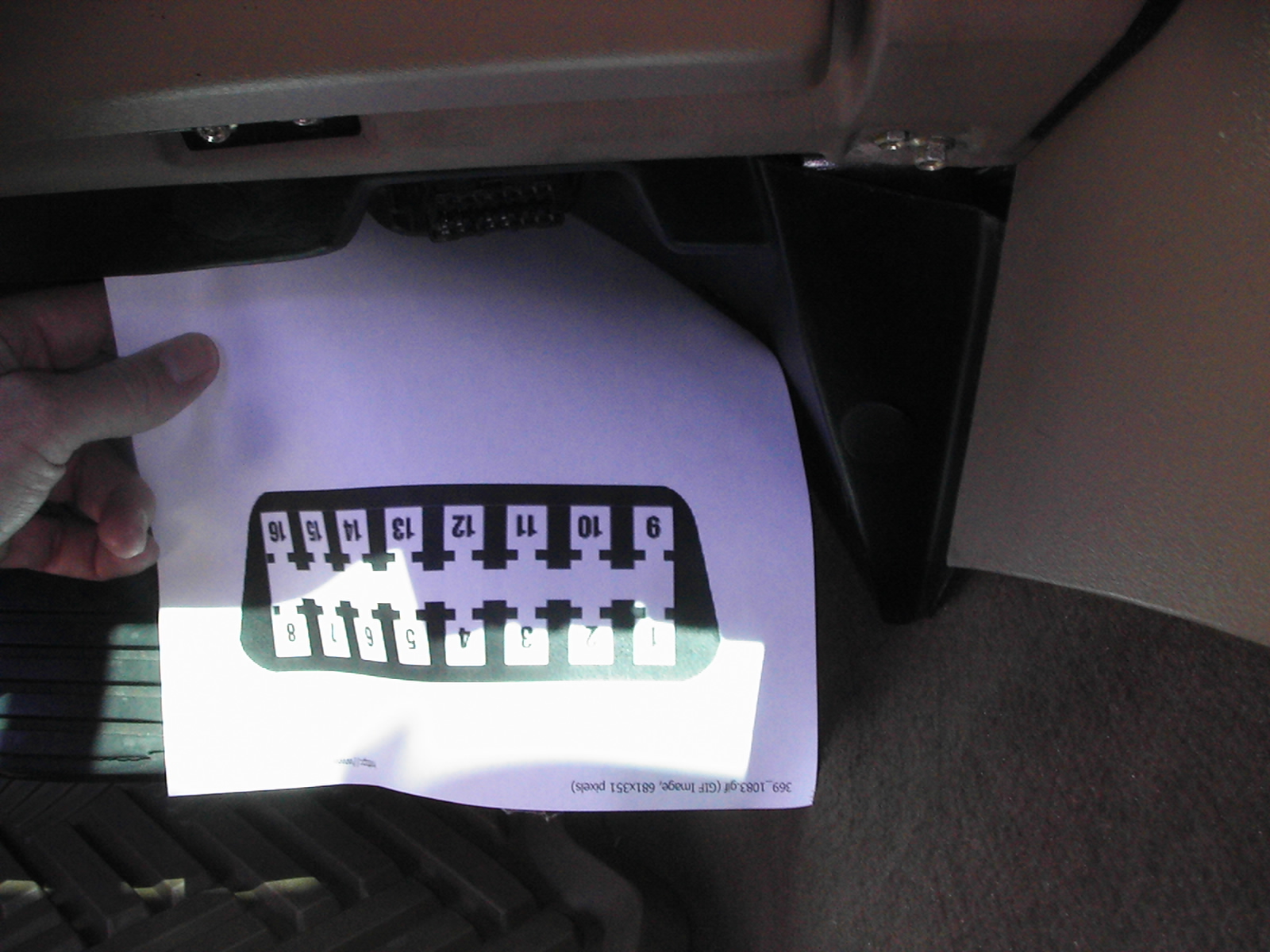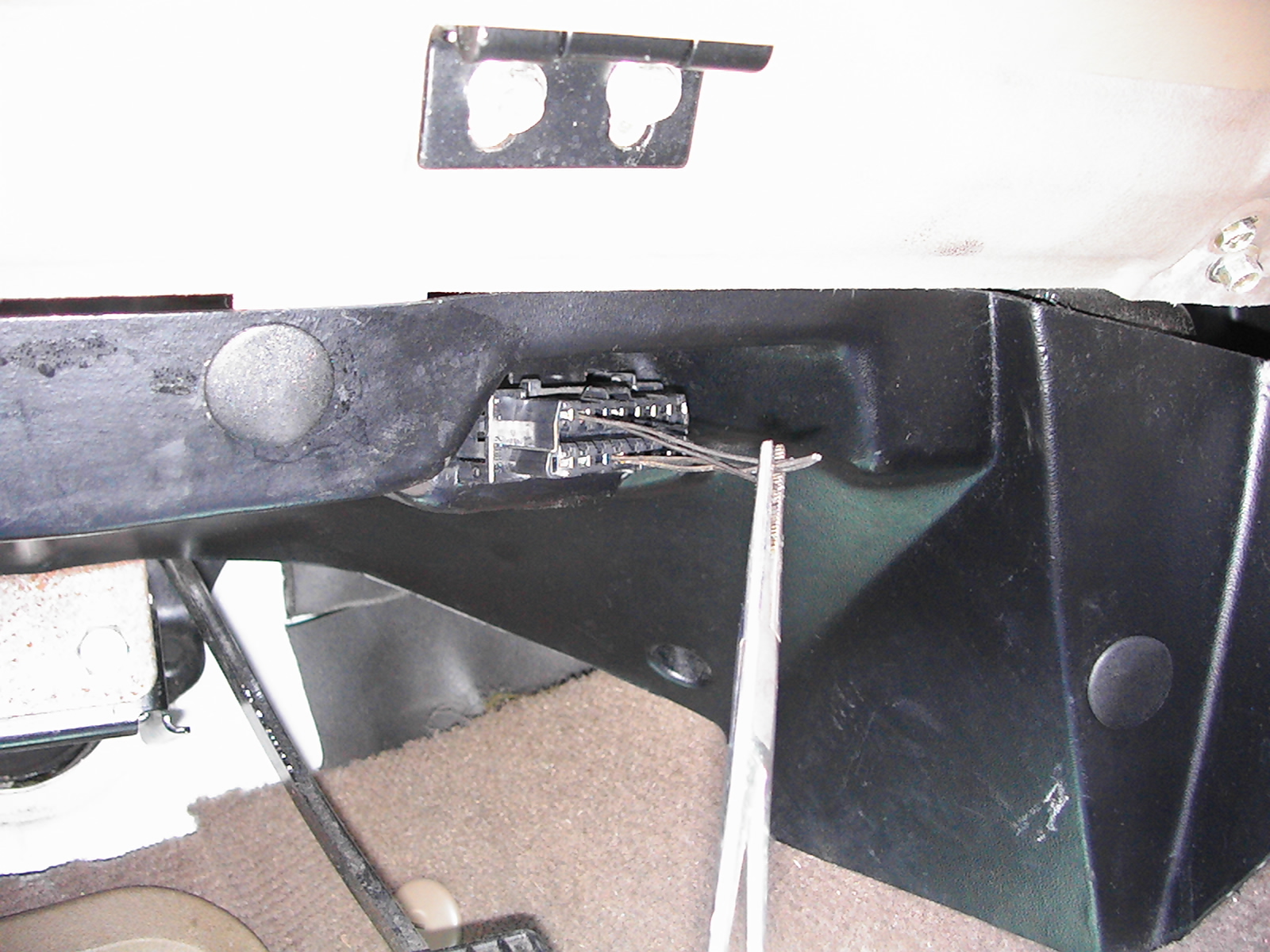The following are instructions I found on the 'net. They worked perfectly for me on our 1997 Land Rover Discovery to reset the ABS warning light. Our car as the OBD-II connector under the dash, projecting through the fashia just below the fuse box and above the gas pedal.
*********************
ABS Fault Blink Code Diagnostic Procedure
MODEL:
Discovery
AFFECTED VEHICLES
LP
LH
LJ TA163104 onwards
LJ TA501920 onwards
DETAIL
If diagnostic equipment is not available (i.e. there is not a current TestBook disk available) the following procedure can be carried out using the "Blink Code" method to read fault codes. Faults are stored in the ECU memory in code form, which can be retrieved by initiating and reading a series of flash and pause sequences on the ABS warning light.
ACTION REQUIRED
If diagnostic equipment is not available follow the procedure below to diagnose an ABS fault.
PARTS INFORMATION
YPJ10015 - terminal - 2 required (available in LRNA Terminal Kit).
PROCEDURE
1. Fabricate a jumper wire with YPJ10015 terminals and appropriate wire (6" length 16 gauge).
2. Locate TestBook diagnostic connector under dash. Connect jumper wire to pins 5 and 15 and turn ignition to position 2.
3. Five seconds after the ignition is turned to position 2 the Anti-Lock warning light will extinguish, indicating the start of the cycle.
4. Observe the Anti-Lock warning light, the start phase of the blink code is signified by the following:
- Pause = 2.5 secs. (long)
- Flash = 2.5 secs. (long)
- Pause = 2.5 secs. (long)
- Flash = 0.5 secs. (short)
5. The first part of the code number is determined by a pause of 2.5 secs. which precedes a series of short flashes then a long pause. The number of short flashes is equal to the first digit in the fault code.
6. The second digit in the code number is determined after a pause of 2.5 secs. which occurs between the first and second code flashes. After the pause there will be a number of short flashes, the number of flashes is equal to the second digit in the fault code. After the flashes there will be another pause of 2.5 seconds before the system repeats the flash and pause sequence. This will allow for a verification of the code or if the initial flash and pause sequence was missed.
7. The sequence of the start phase, first and second code parts will continue until terminated by the operator. To terminate the code sequence disconnect the jumper wire.
NOTE:Termination will clear the memory of that particular fault, and the fault will not be retrievable. Do not terminate the sequence if unsure of the code number.
8. The memory is capable of storing more than one fault. To search the memory, after the jumper wire is disconnected wait until the Anti-Lock light illuminates and then turn the ignition off, the code is now completely cleared. To obtain the next code repeat the procedure from step 2.
9. If there are no faults remaining there will be a long pause of 7.5 secs. after the start phase.
10. Once all the codes have been obtained and cleared, locate the problem cause and rectification for each code and fix accordingly.
FAULT CODE LIST
KEY: IV - Inlet Valve, OV - Outlet Value, RCP - Recirculation pump (ABS pump)
Sensor check:
1. Carry out multimeter test, check electrical resistance of sensor, this should be 700-2000 ohms. Check sensor voltage output, this should be greater than or equal to 0.93 VAC RMS when rotating the wheel at 1 rev/sec.
2. Check sensor air gap. Push sensor through bush until it touches exciter ring. Sensor will be knocked back to correct position when the vehicle is driven.
3. Check run out of the exciter ring and rectify if necessary.
4. Check bearing play and adjust if necessary.
5. Check sensor bush and exchange if necessary.
*********************
Below are four pictures and some videos showing where the Testbook Connector (OBD-II connector / Diagnostic Test Connector) is located, what the pinout looks like, and the jumpers I used to initiate the blink codes.

The picture below shows the pinout for the connector. Note that the diagram I printed off the 'net is being held upside down. Pin no. 1 is at the lower right corner, pin no. 8 is at the lower left corner, pin no. 9 is at the upper right corner, and pin no. 16 is at the upper left corner.

The picture below shows my jumper setup. FANCY! The wires were too small a gauge, so I folded them over and squished the fold with pliers. They fit nicely after that.

*********************
The videos below show the blink codes being read out. The first code is 2-6, the second is 2-14, and the third is 5-14. Below the videos is a post copied from the web explaining the codes (the post also explains how to do this on a different Land Rover).
*********************
Just behind the driver's feet is a plastic panel. Remove that panel and locate the blue ABS diagnostic connector. Use a paper clip to jump the black and black/pink wires together. Remove the trim panel on the door side of the seat and remove the ABS light relay. It will be either blue or green depending on the year of the vehicle. Turn on the key (don't engage the starter) and the anti-lock light will begin a series of blinks. The first will be a long blink followed by a short blink. This indicates that the ECU is in diagnostic mode. Start counting the blinks after that. The first code that comes up will be something like blink, blink, a 2.5 second pause, and then blink, blink, blink, blink, blink, blink to indict a failure code of 2-6. Each stored code will display this way 3 times before the next one starts. It is a slow process (especially if you have 4-15's and 6-15's stored) but it works.
The Codes:
Code 2-6 - Faulty stoplight switch or wiring. Fuse A5 blown or not fitted
Code 2-7 - Continuous supply to ECU with ignition off. Faulty valve relay or wiring Code 2-8 - No voltage to ABS solenoid valves. Faulty valve relay or wiring.
Code 2-12 - Front right, too large an air gap or the sensor has been forced out by exciter ring.
Code 2-13 - Rear left, too large an air gap or the sensor has been forced out by exciter ring.
Code 2-14 - Front left, too large an air gap or the sensor has been forced out by exciter ring.
Code 2-15 - Rear right, too large an air gap or the sensor has been forced out by exciter ring.
Code 3-0 to 3-9 - Open circuit in connection from ECU to solenoid valve in booster, or in ECU
Code 4-0 to 4-9 - Short circuit to earth in connection from ECU to solenoid valve in booster
Code 4-12 - Front right, wiring to sensor broken or sensor resistance too high.
Code 4-13 - Rear left, wiring to sensor broken or sensor resistance too high.
Code 4-14 - Front left, wiring to sensor broken or sensor resistance too high. Code 4-15 - Rear right, wiring to sensor broken or sensor resistance too high.
Code 5-0 to 5-9 - Short circuit to 12volt in connection from ECU to solenoid valve in booster, possible earth fault.Code 5-12 - Front right, intermittent fault with sensor or wiring
Code 5-13 - Rear left, intermittent fault with sensor or wiring
Code 5-14 - Front left, intermittent fault with sensor or wiring
Code 5-15 - Rear right, intermittent fault with sensor or wiring
Code 6-0 to 6-9 - Short circuit between two connection from ECU to solenoid valve in booster.
Code 6-12 - Front right, no output from sensor, sensor may have too large an air gap.
Code 6-13 - Rear left, no output from sensor, sensor may have too large an air gap.
Code 6-14 - Front left, no output from sensor, sensor may have too large an air gap.
Code 6-15 - Rear right, no output from sensor, sensor may have too large an air gap.
To clear the code, pull out the paper clip whle the code is flashing. I only had one code for my problem, but for multiple codes, I understand that the next code will come up after you clear the current one. You might need to turn the ignition off, replace the jumper and turn back on for that, though.
http://www.lro.com/forum/viewtopic.php?p=19874